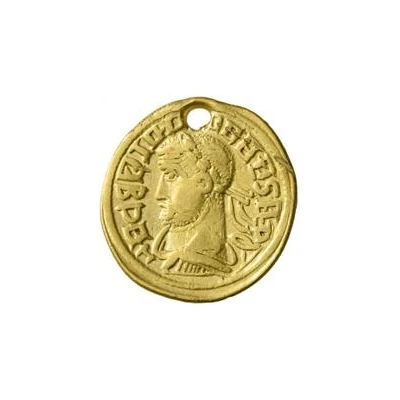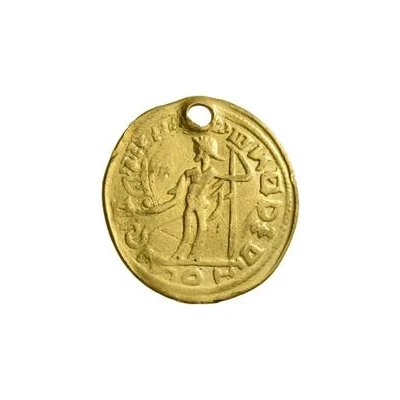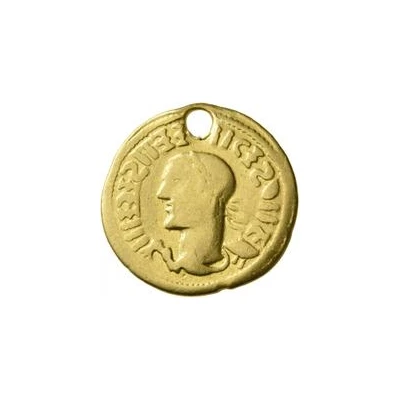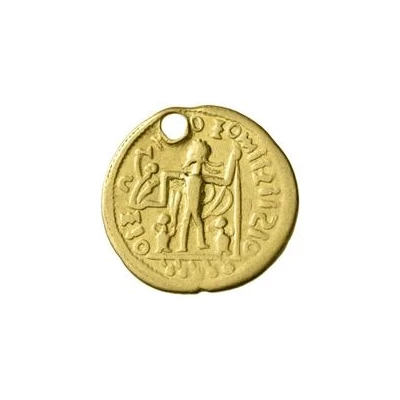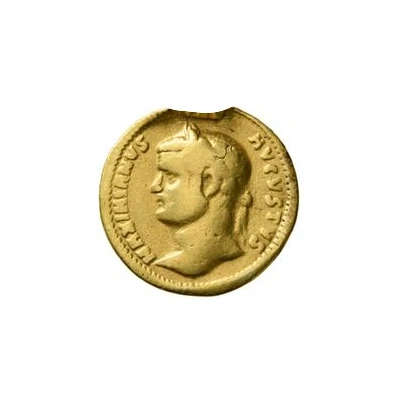
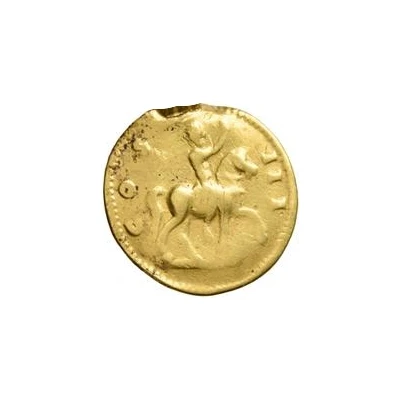

© Leu Numismatik
1 Aureus - Imitating Maximian,
| Gold | 5.35 g | 21 mm |
| Issuer | Uncertain Germanic tribes |
|---|---|
| Type | Non-circulating coin |
| Years | 285-301 |
| Value | 1 Aureus |
| Currency | Aureus (circa 150-325) |
| Composition | Gold |
| Weight | 5.35 g |
| Diameter | 21 mm |
| Shape | Round (irregular) |
| Technique | Hammered |
| Demonetized | Yes |
| Updated | 2024-10-04 |
| Numista | N#188892 |
|---|---|
| Rarity index | 100% |
Reverse
Emperor on horseback facing right while raising his right hand in salute, all surrounded by legend.
Script: Latin
Lettering: COS - III
Edge
Plain
Comment
Because the portrait is finely engraved and the legend is readable, this is likely an early imitation.The exact lettering of the surrounding legend may vary.
The vast majority of Aureus and Quinarius pieces from the Uncertain Germanic tribes are either holed or have a suspension loop attached. This implies that, while these were coins, these imitations were mainly meant for jewelry rather than to be spent.
Interesting fact
One interesting fact about this coin is that it is an imitation of a Roman imperial coin, specifically the aureus of Maximian, which was issued during the late 3rd century AD. The fact that it was made by an uncertain Germanic tribe and is made of gold suggests that it may have been created as a form of tribute or homage to the Roman Empire, or possibly as a means of establishing trade relations. The coin's weight of 5.35g is also notable, as it suggests that it was intended to be a high-value coin, possibly used for large transactions or as a store of value.
